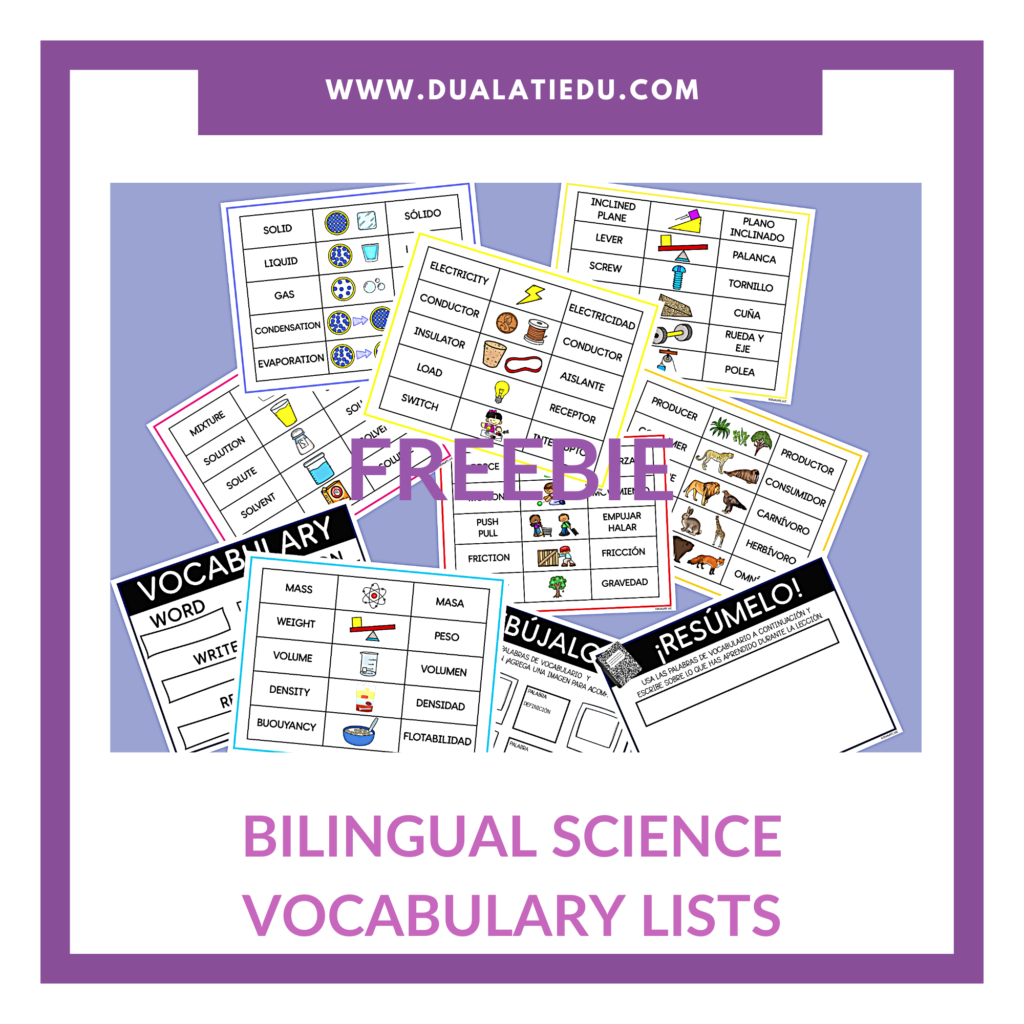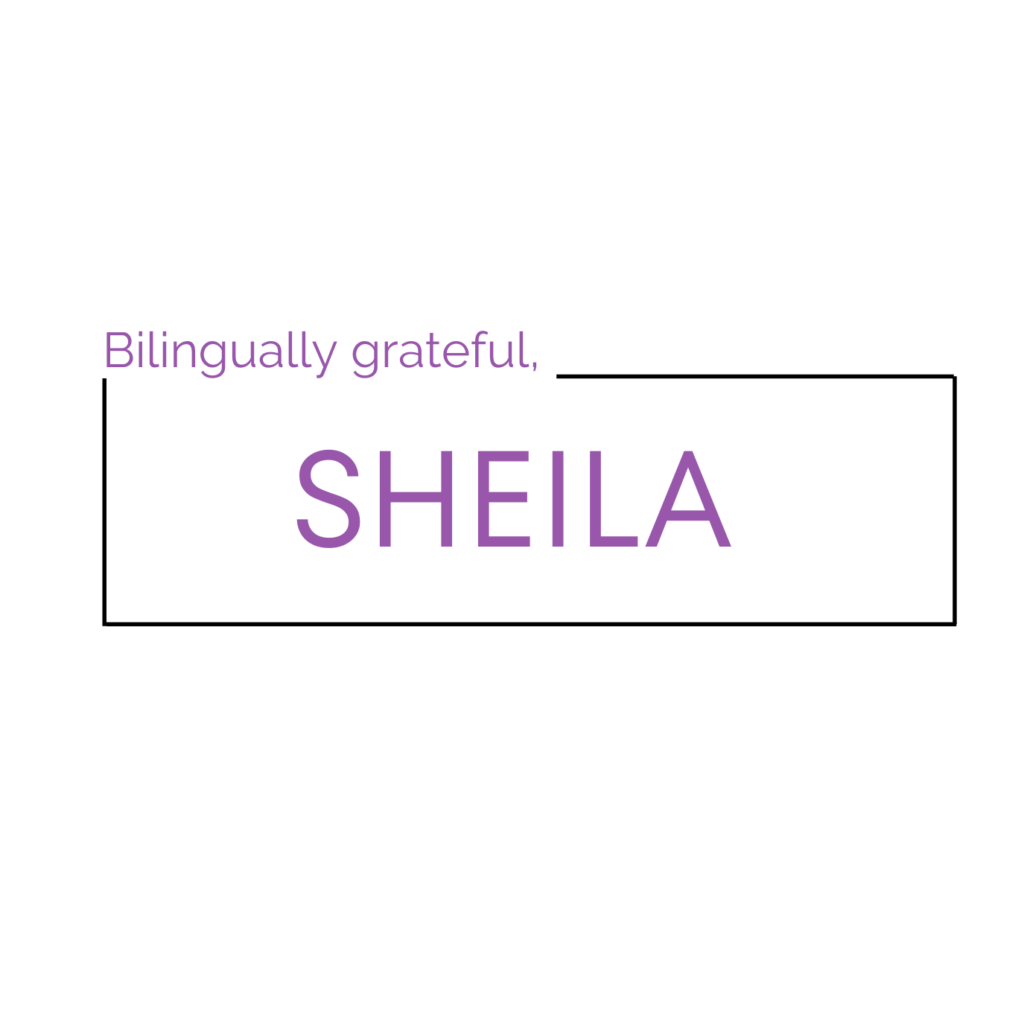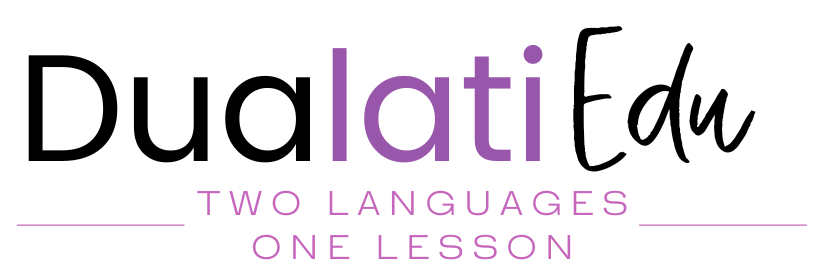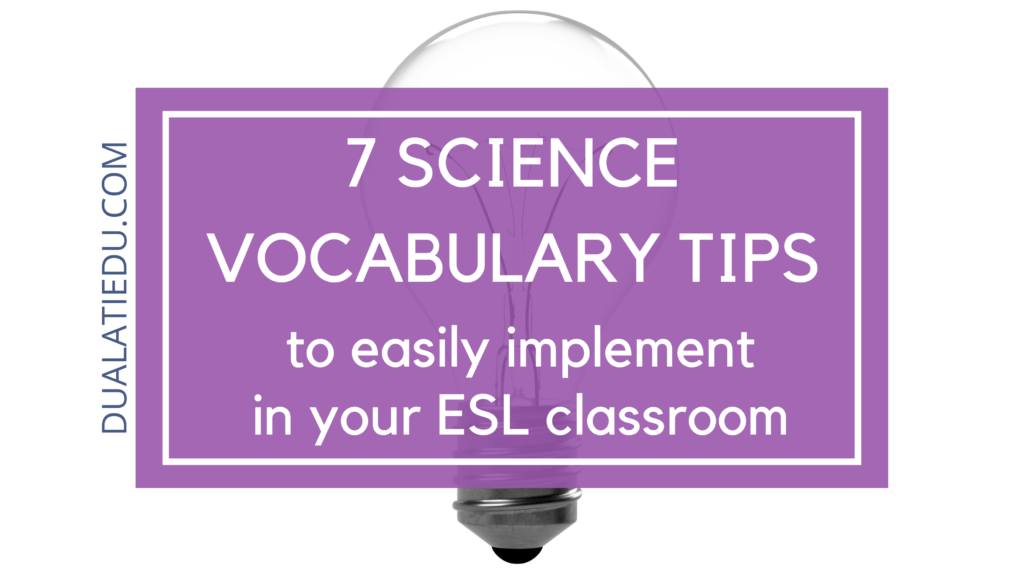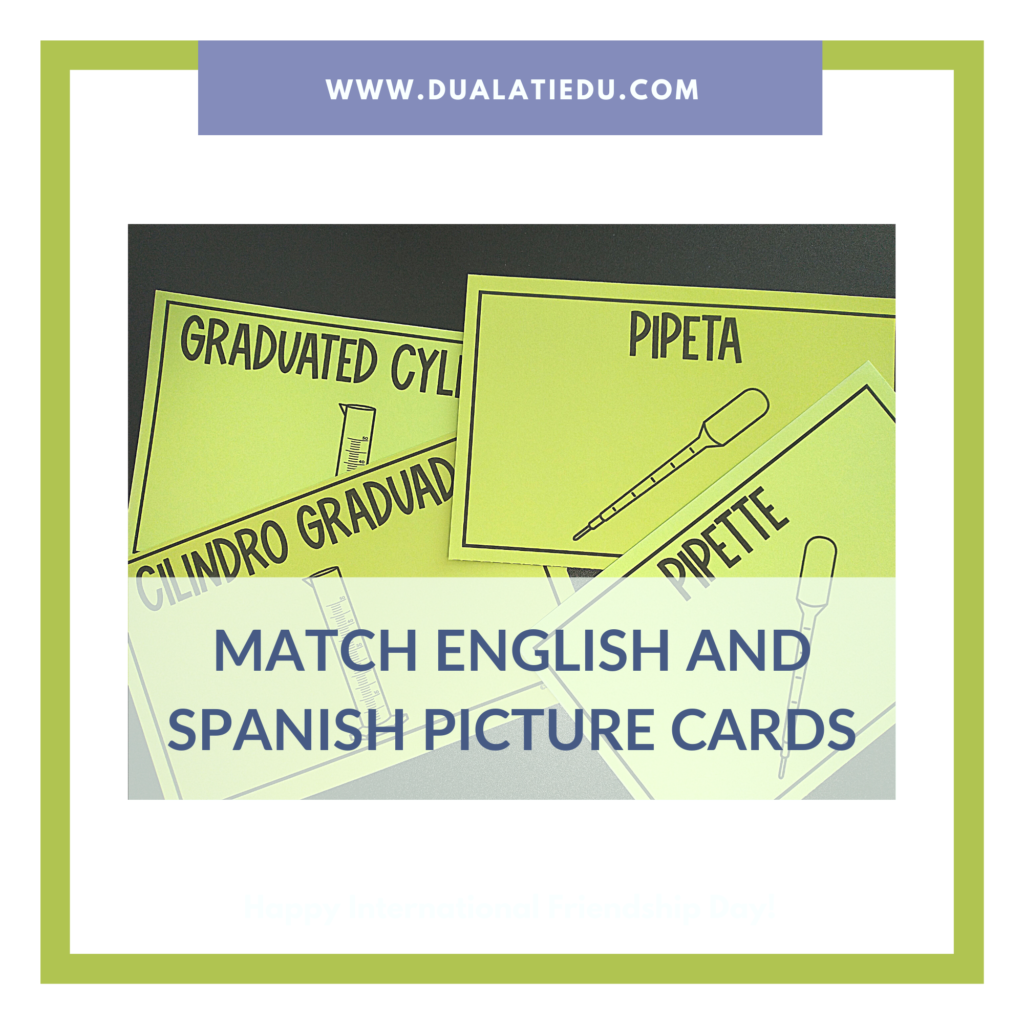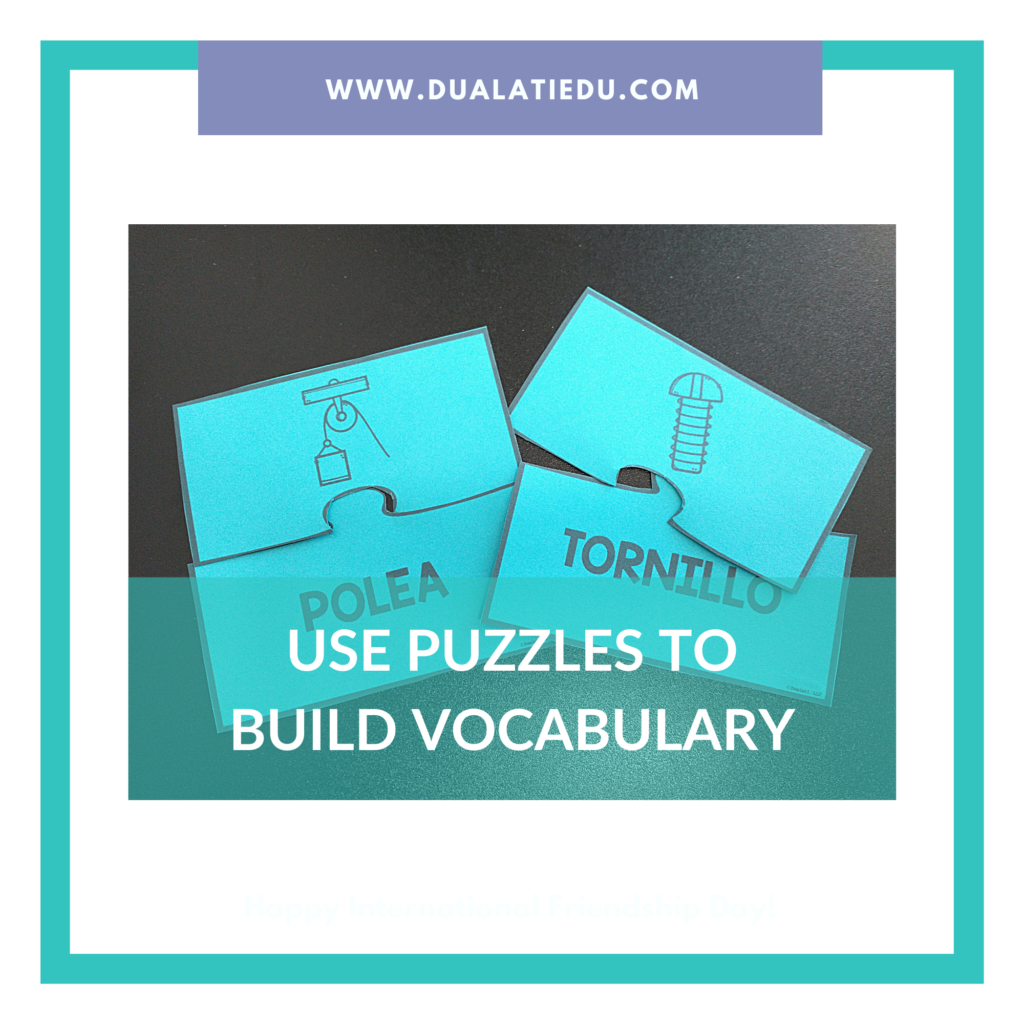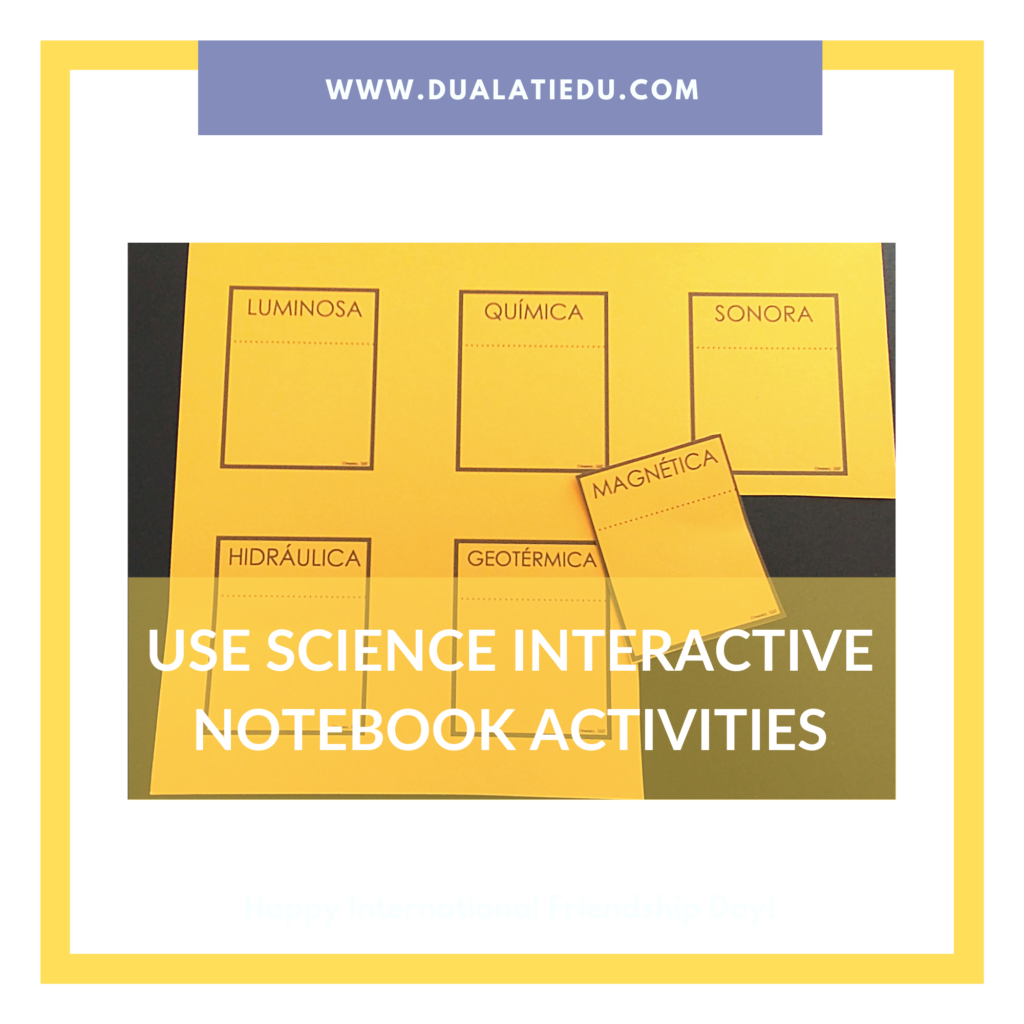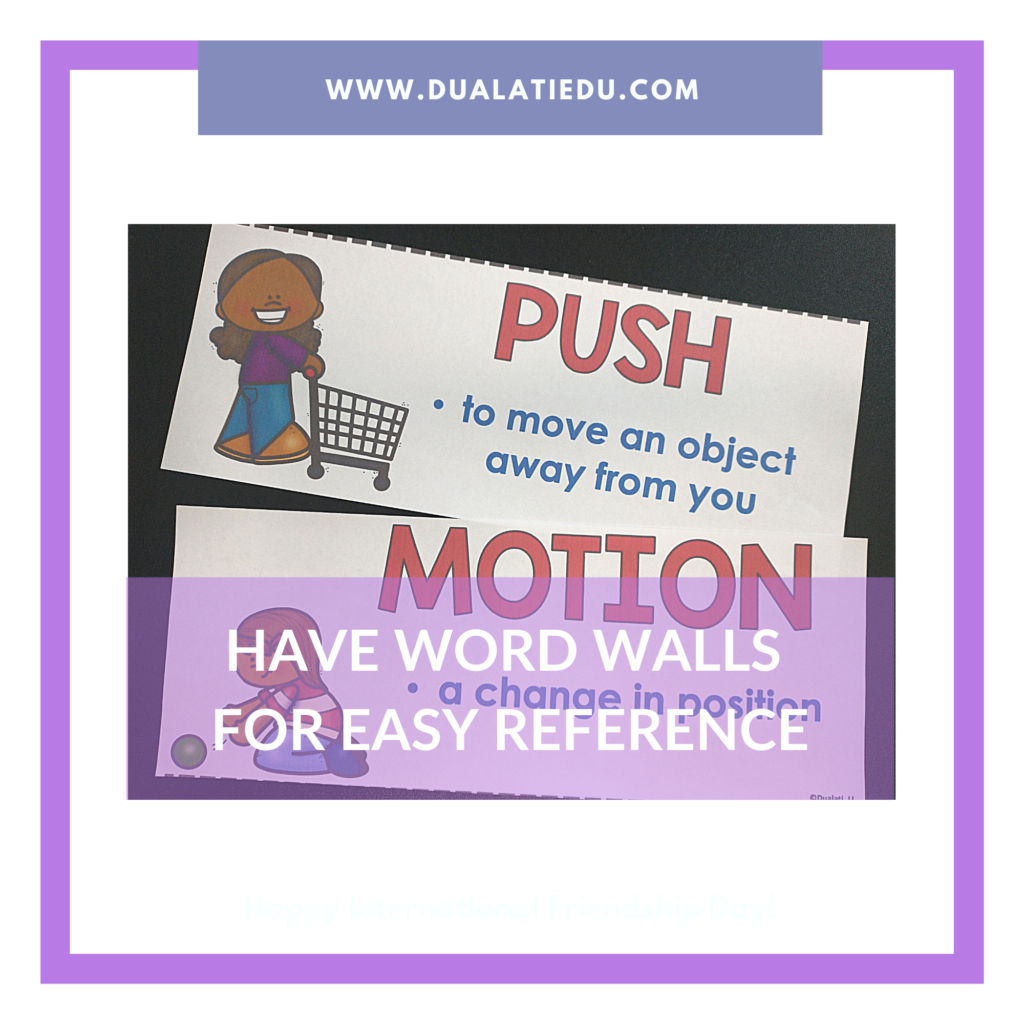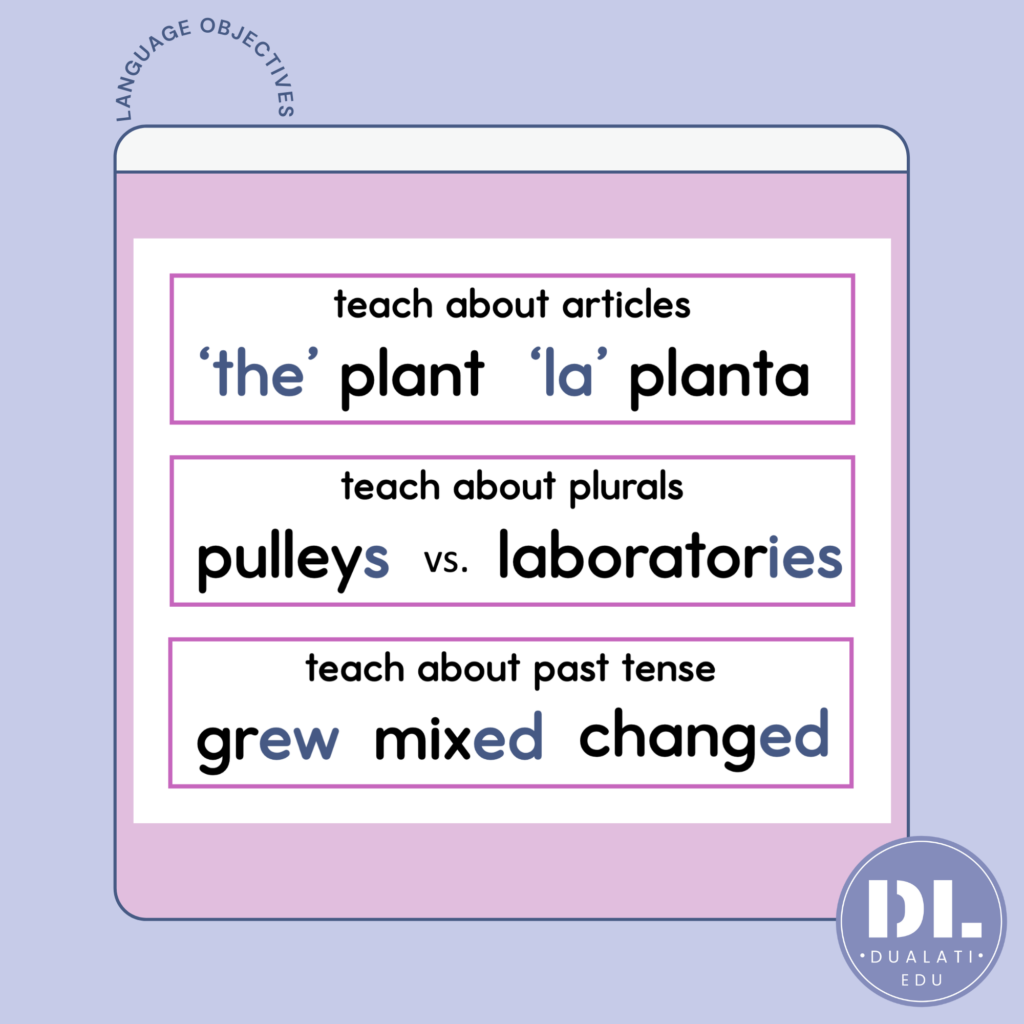When teaching science vocabulary in ESL or dual language classrooms, there are many scaffolds that you can offer students.
Students need to master vocabulary to transfer concepts to applied science.
Next, we will discuss 7 strategies that you can easily and quickly apply in your classroom to achieve rigorous and meaningful academic engagement.
1. Cognates
Cognates are words from two different languages, that have the same meaning and word origin.
So, if English learners know a vocabulary word in their native language, they can deduce the meaning of their cognates. (Make them aware that there are false cognates, too! Example: exit in English and éxito in Spanish – which means success.
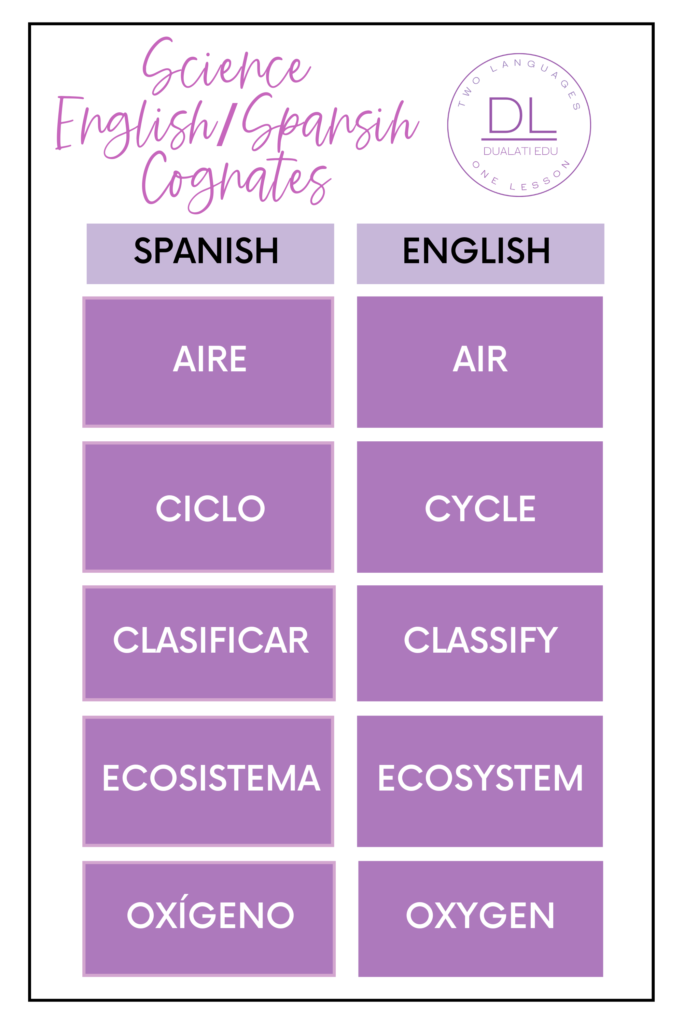
Have a list of words sorted either alphabetically or by science topic handy for students to quickly refer to when they are reading or during an experiment.
You can also point these out as you teach or have students share as they notice them.
2. Roots and Affixes
Students can understand the meaning of new words if they understand parts of them. Many words are formed by adding affixes (prefixes or suffixes) to root words. Root words have meaning, but generally are not found independently within a text.
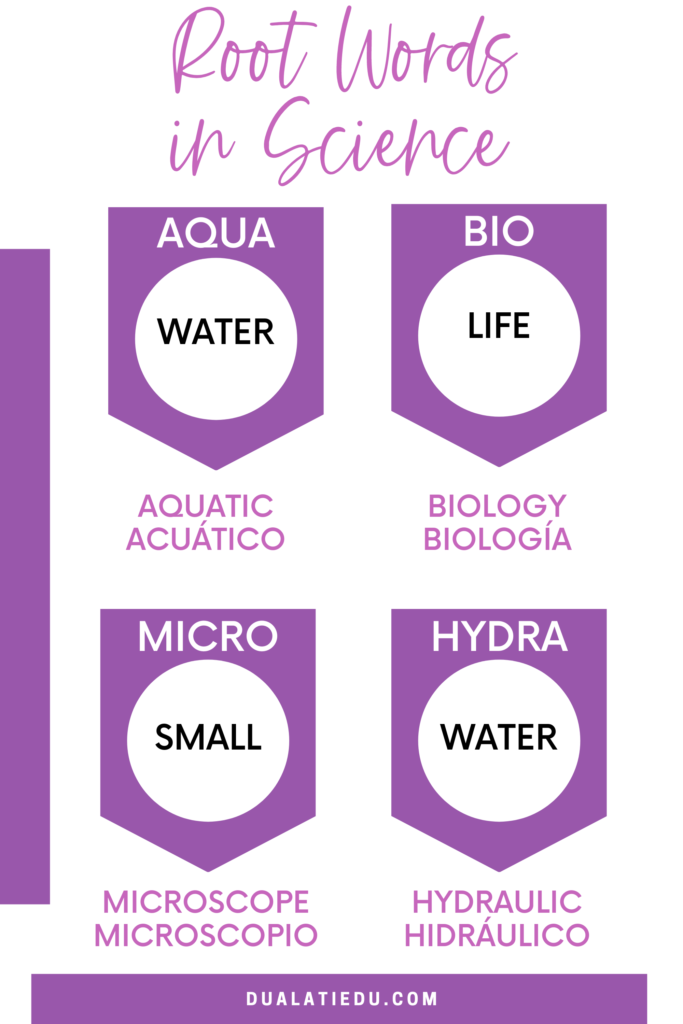
Have students make a running list in their science journals of root words and their meanings as they encounter them throughout the year. If they fill out this list, rather than having lists handed to them, they have a sense of ownership and will use them more often.
3. Bilingual Science Vocabulary Matching Cards
The following strategy is specifically for dual language classrooms. It is crucial to be able to bridge vocabulary from one language to another in order to become fully biliterate students.
After a specific lesson, you can offer a science center with pictures and vocabulary words in both languages to help cement their knowledge.
Here is an example. Find this SCIENCE TOOLS resource by clicking on the picture below.
4. Science Vocabulary Puzzles
A fun way to practice vocabulary is with puzzles that have students match pictures with their corresponding vocabulary words.
Select key words from your lessons, make fun puzzles using templates, cut, laminate and place the pieces in plastic baggies that are labeled by topic and have them ready to go to in science centers either during or after a lesson.
Click on the picture to find this SIMPLE MACHINES resource in English and Spanish that include the puzzles in the picture below.
5. Science Vocabulary Interactive Notebook Activities
Science interactive notebooks are a vehicle for students to apply, evaluate and synthesize facts from the specific lesson.
They promote student understanding by having students write down notes about what they understand from the teacher’s lecture or print material or digital platforms. They can also record observations from experiments or phenomena around them and reflect and communicate what the have learned by using guiding templates provided by teachers such as the ones below.
Click on the picture to find a resource that addresses FORMS OF ENERGY IN ENGLISH AND SPANISH.
6. Science Vocabulary Word Walls
Science word walls are tools for students to have easy access to vocabulary and pictorial models of current topics in the classroom.
These should reflect words that students are learning during a particular lesson. They allow students to learn from a source other than the teacher or book.
These are examples of Word Wall Cards that you can find in the FORCE and MOTION resource found in my TPT store.
7. Language Objectives
Finally, we will address language objectives. Even though it may take a bit more to plan, teaching across content subjects should be every teacher’s goal. It allows students to make connections from all subject topics and apply that knowledge to their world.
Language objectives address how students will learn the content objectives (receptive language skills – listening and speaking). They also address how they will show or demonstrate what they have learned (expressive language skills – speaking and writing).
While teaching science vocabulary, you can plan to incorporate language objectives to provide cross-curricular instruction.
IDEAS
- Teach differences between the use of articles in English and Spanish
- Facilitate a mini-lesson of plural rules as they naturally come up in your vocabulary lessons
- Coach students about pronouncing past tense verbs such as example /t/ or /d/ sounds for an -ed ending.
Learn more about language objectives by clicking on the picture below.
Here are more general ideas for vocabulary games in the classroom!
To learn more about ESL strategies, click here.
